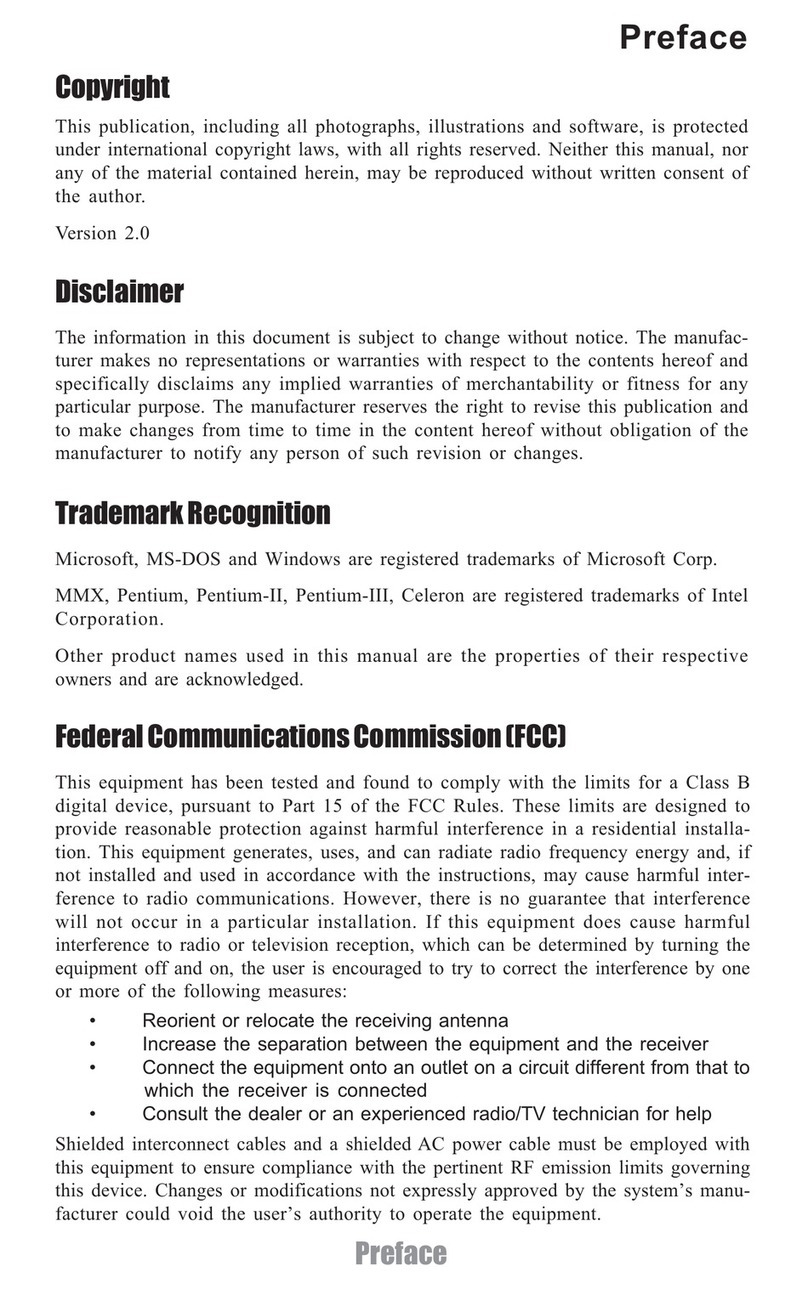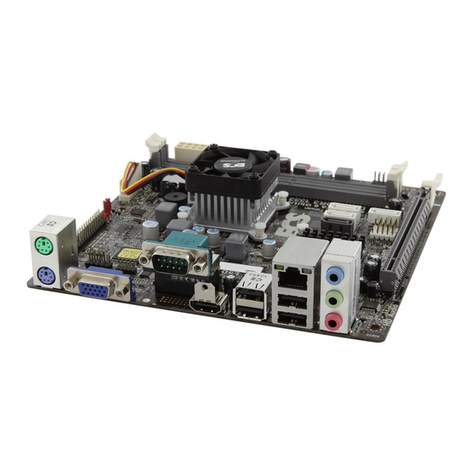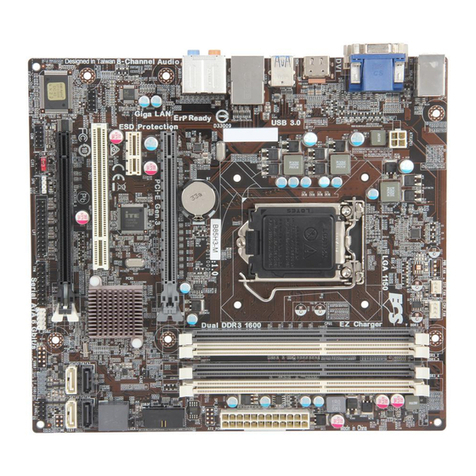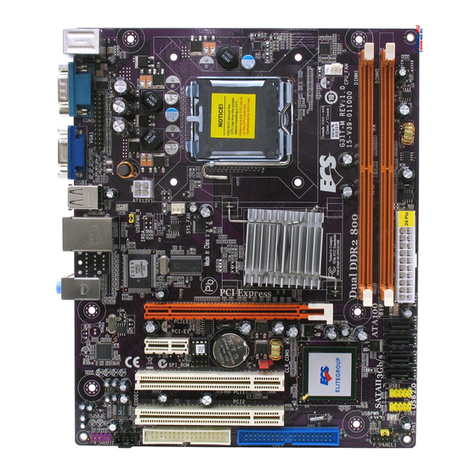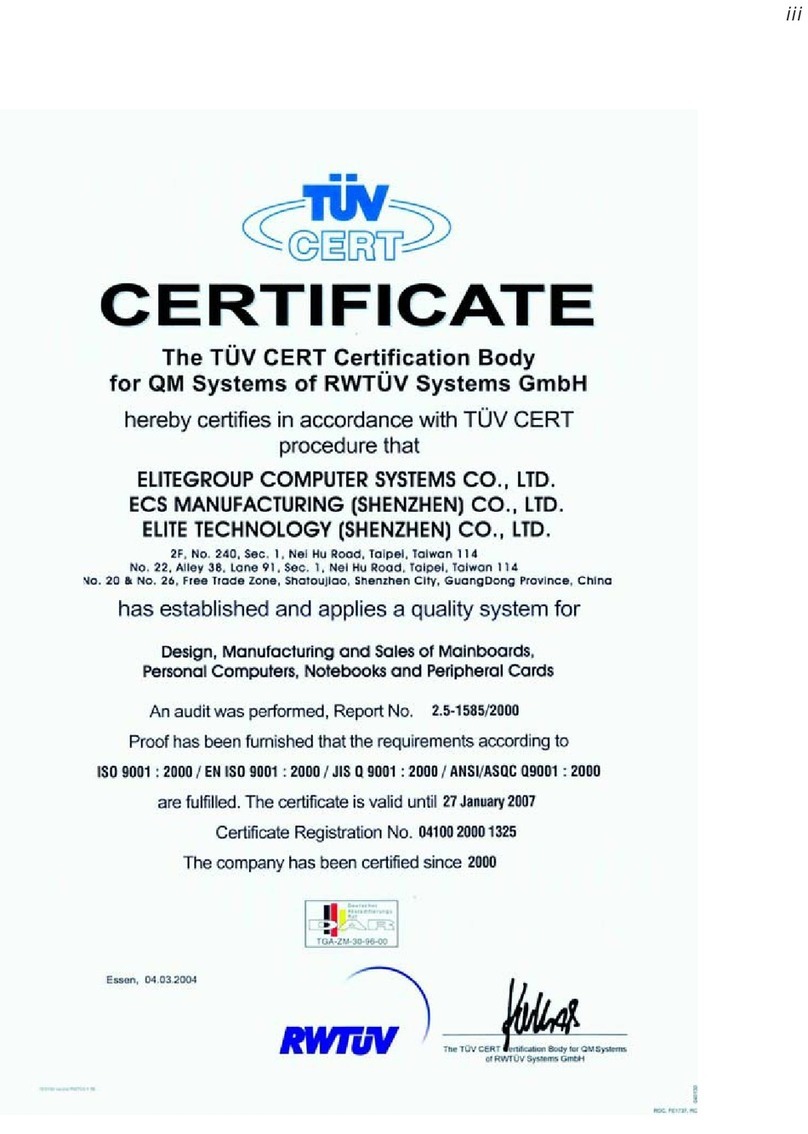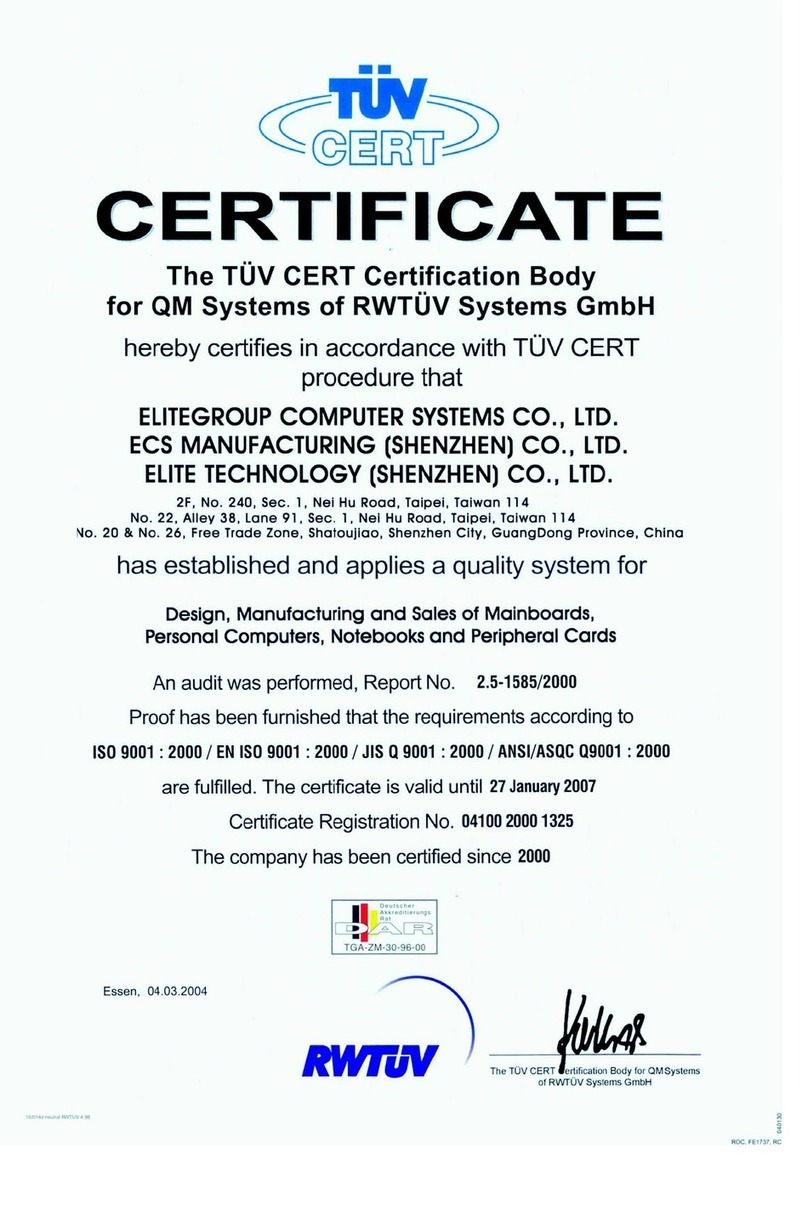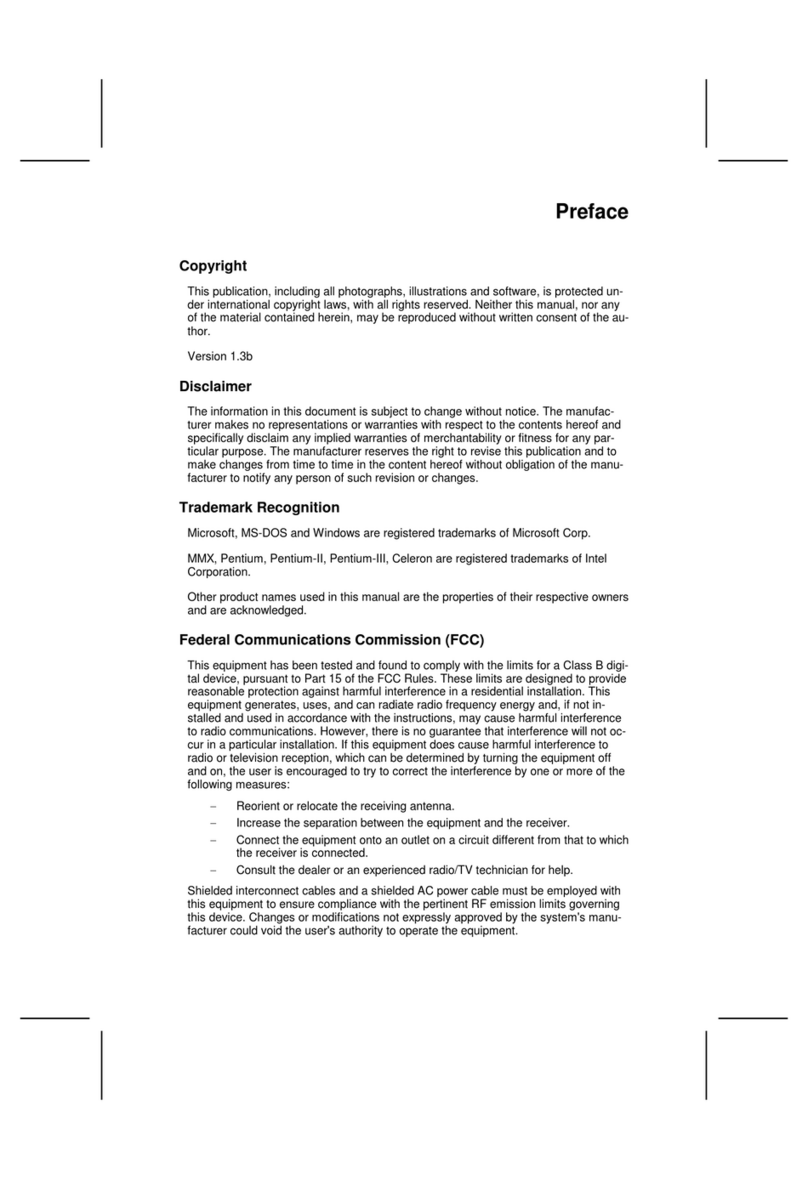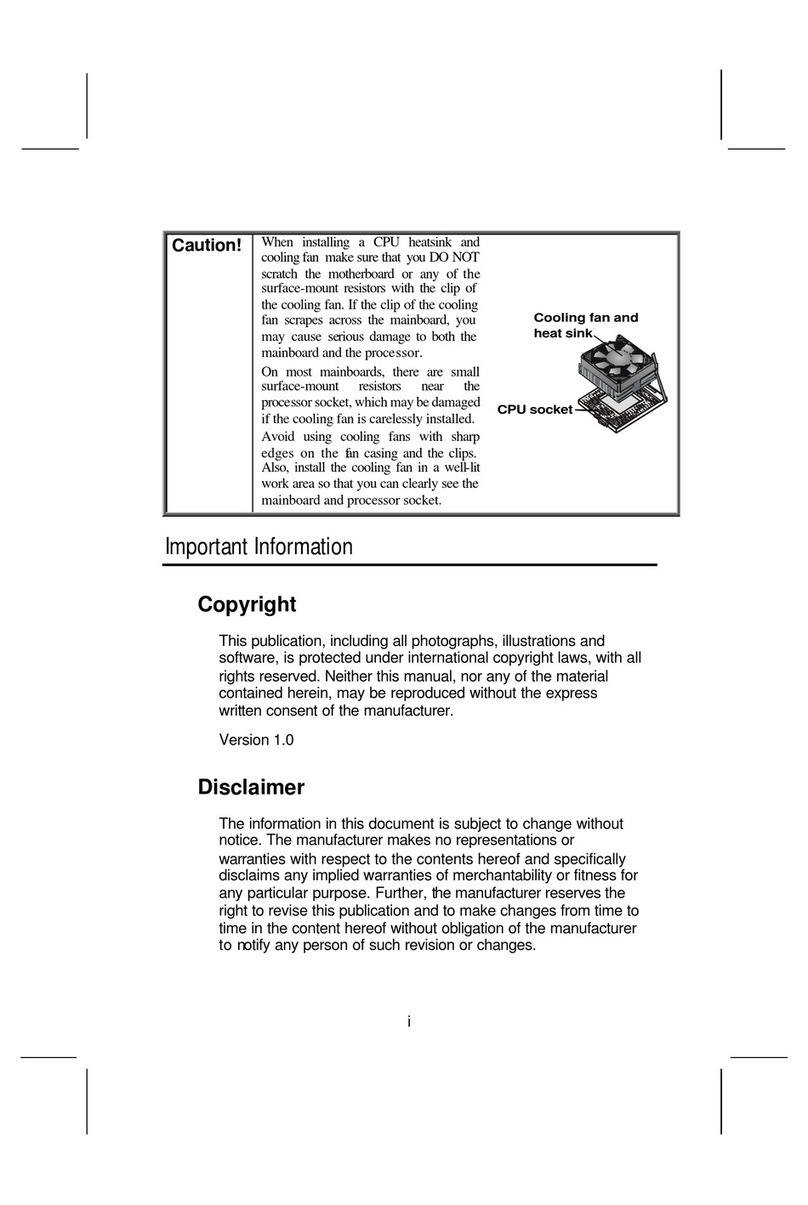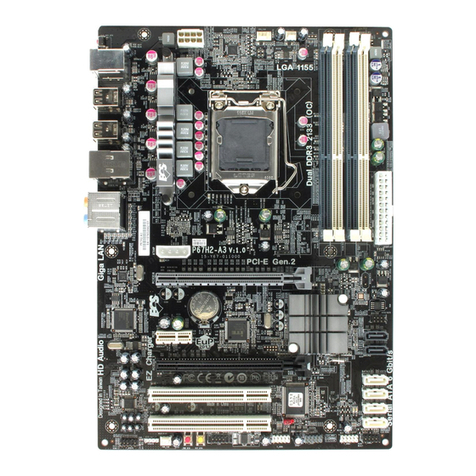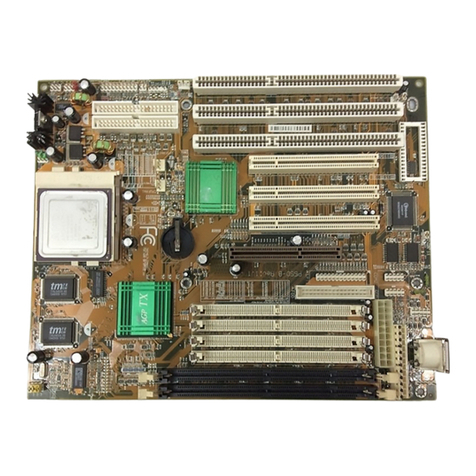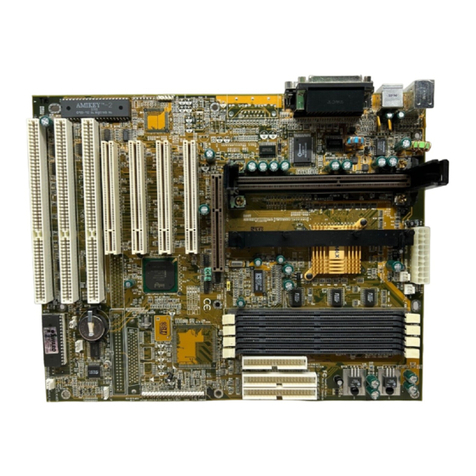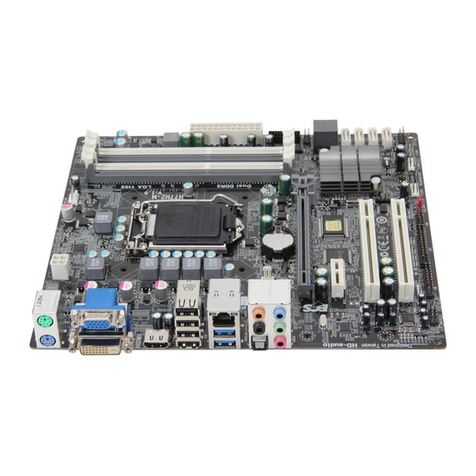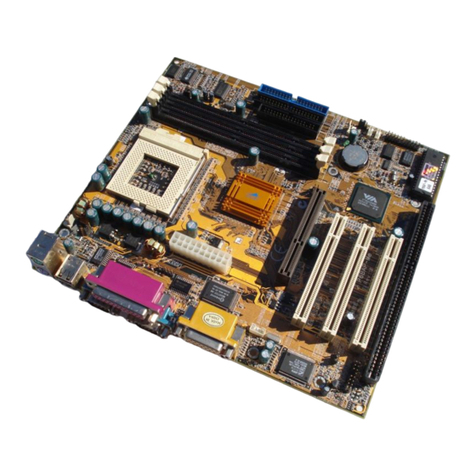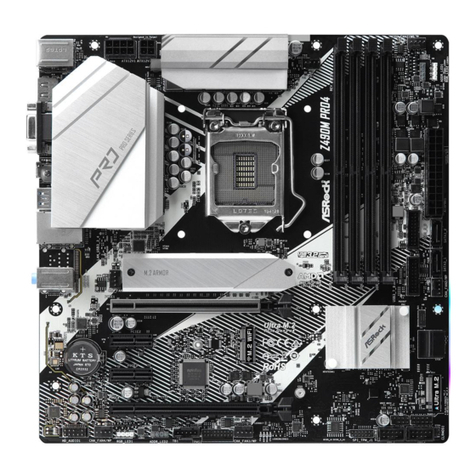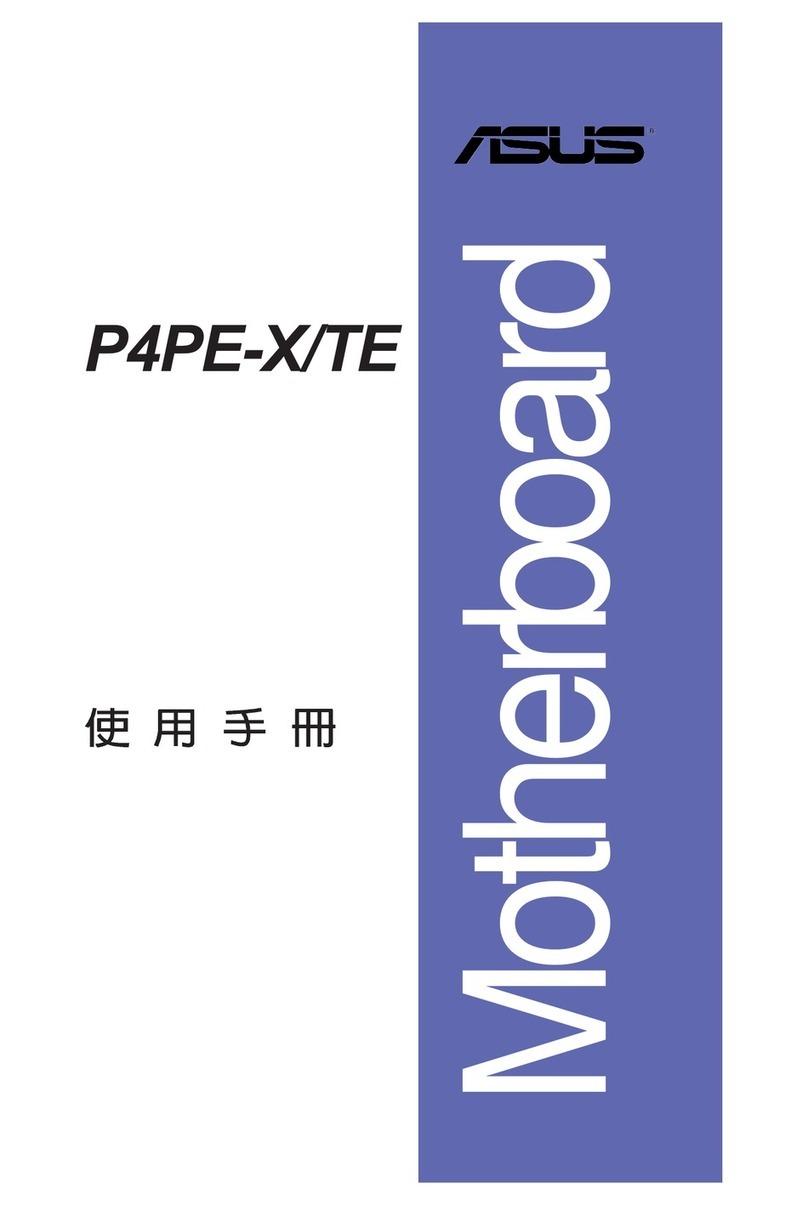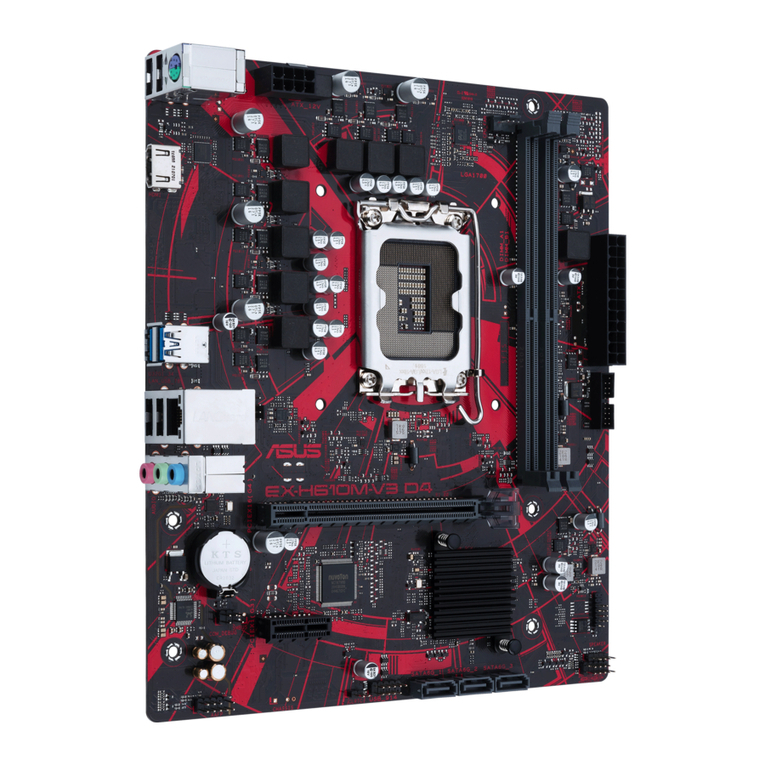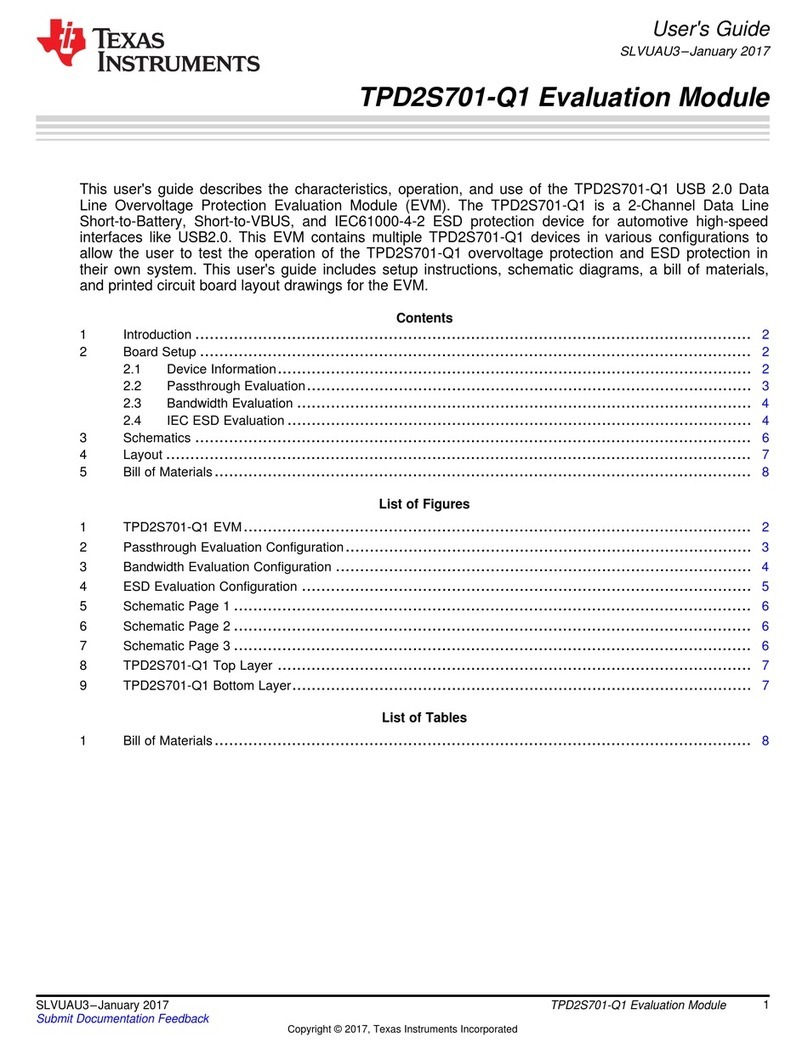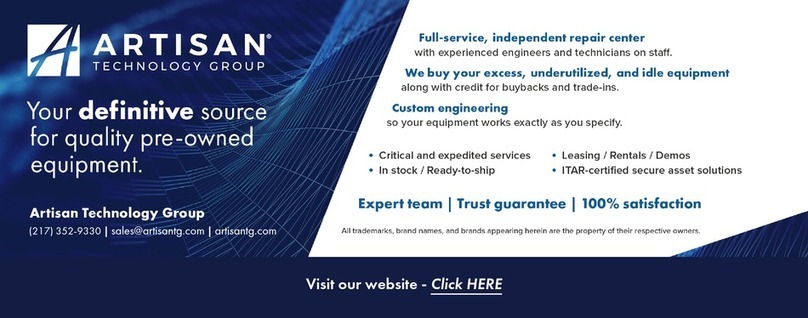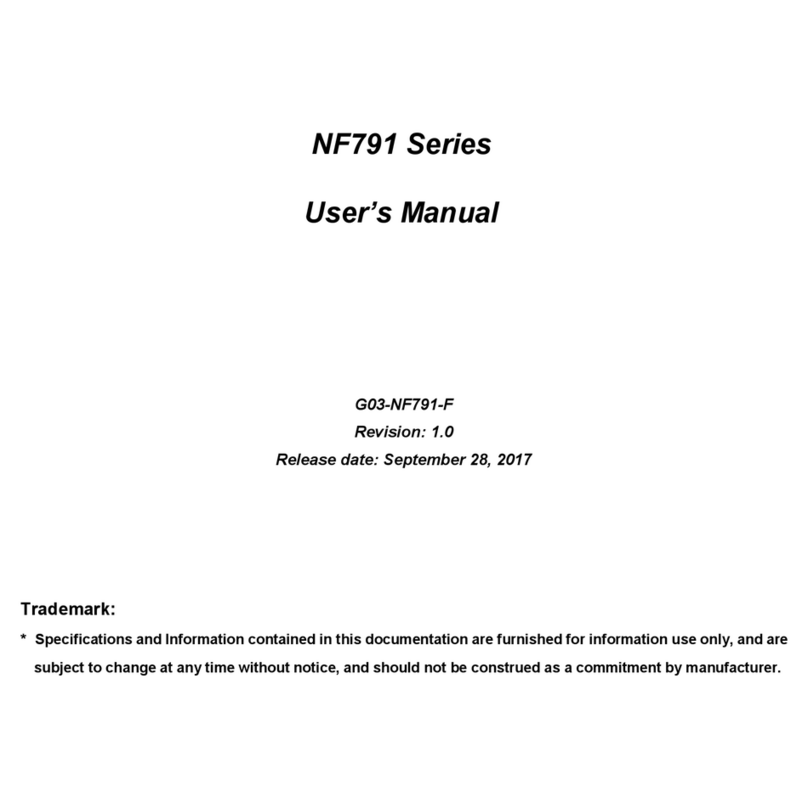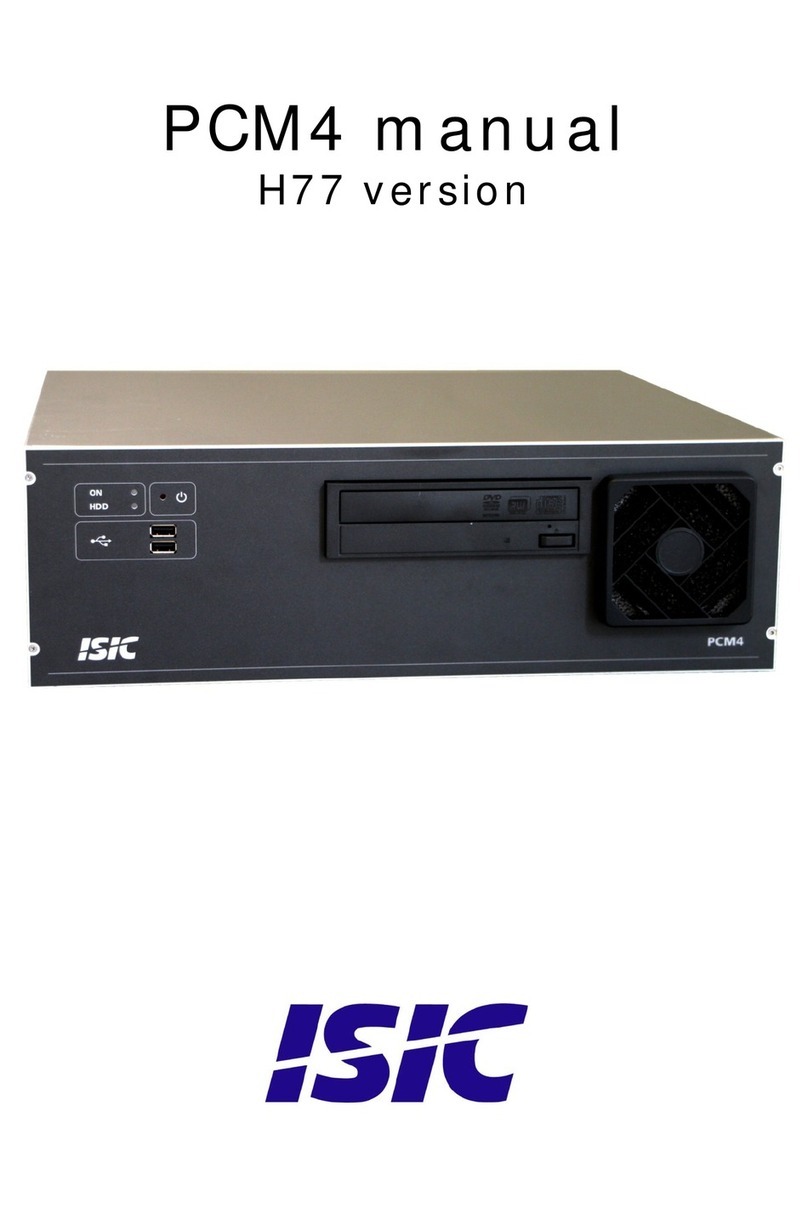ECS GeForce 7050M-M User manual



Preface
Preface
Copyright
This publication, including all photographs, illustrations and software, is protected
under international copyright laws, with all rights reserved. Neither this manual, nor
any of the material contained herein, may be reproduced without written consent of
the author.
Version 2.0A
Disclaimer
The information in this document is subject to change without notice. The manufac-
turer makes no representations or warranties with respect to the contents hereof and
specifically disclaims any implied warranties of merchantability or fitness for any
particular purpose. The manufacturer reserves the right to revise this publication and
to make changes from time to time in the content hereof without obligation of the
manufacturer to notify any person of such revision or changes.
TrademarkRecognition
Microsoft, MS-DOS and Windows are registered trademarks of Microsoft Corp.
AMD, Phenom, Athlon, Sempron and Duron are registered trademarks of AMD
Corporation.
Other product names used in this manual are the properties of their respective
owners and are acknowledged.
FederalCommunicationsCommission(FCC)
This equipment has been tested and found to comply with the limits for a Class B
digital device, pursuant to Part 15 of the FCC Rules. These limits are designed to
provide reasonable protection against harmful interference in a residential installa-
tion. This equipment generates, uses, and can radiate radio frequency energy and, if
not installed and used in accordance with the instructions, may cause harmful inter-
ference to radio communications. However, there is no guarantee that interference
will not occur in a particular installation. If this equipment does cause harmful
interference to radio or television reception, which can be determined by turning the
equipment off and on, the user is encouraged to try to correct the interference by one
or more of the following measures:
• Reorient or relocate the receiving antenna
• Increase the separation between the equipment and the receiver
• Connect the equipment onto an outlet on a circuit different from that to
which the receiver is connected
• Consult the dealer or an experienced radio/TV technician for help
Shielded interconnect cables and a shielded AC power cable must be employed with
this equipment to ensure compliance with the pertinent RF emission limits governing
this device. Changes or modifications not expressly approved by the system’s manu-
facturer could void the user’s authority to operate the equipment.

ii
Preface
DeclarationofConformity
This device complies with part 15 of the FCC rules. Operation is subject to the
following conditions:
• This device may not cause harmful interference, and
• This device must accept any interference received, including interfer-
ence that may cause undesired operation
CanadianDepartmentofCommunications
This class B digital apparatus meets all requirements of the Canadian Interference-
causing Equipment Regulations.
Cet appareil numérique de la classe B respecte toutes les exigences du Réglement sur
le matériel brouilieur du Canada.
AbouttheManual
The manual consists of the following:
Chapter 1
Introducing the Motherboard
Chapter 2
Installing the Motherboard
Chapter 3
UsingBIOS
Chapter 4
Using the Motherboard Software
Describes features of the
motherboard.
Go to Hpage 1
Describes installation of
motherboard components.
Goto Hpage 7
Provides information on us-
ing the BIOS Setup Utility.
Go to Hpage 27
Describes the motherboard
software
Go to Hpage 45
Chapter 5
SettingUpNVIDIARAIDConfiguration
Provides information about
SATARAIDSetup
Go to Hpage 51

iii
TT
TT
TABLE OF CONTENTSABLE OF CONTENTS
ABLE OF CONTENTSABLE OF CONTENTS
ABLE OF CONTENTS
Preface i
Chapter 1 1
IntroducingtheMotherboard 1
Introduction......................................................................................1
Feature..............................................................................................2
MotherboardComponents.............................................................4
Chapter 2 77
77
7
Installing the Motherboard 7
SafetyPrecautions...........................................................................7
Choosinga ComputerCase............................................................7
Installingthe Motherboard in aCase...........................................7
CheckingJumperSettings..............................................................8
Setting Jumpers.......................................................................8
Checking Jumper Settings.......................................................9
Jumper Settings.......................................................................9
InstallingHardware..................................................................10
Installing the Processor.........................................................10
Installing Memory Modules..................................................12
Expansion Slots.....................................................................15
Connecting Optional Devices................................................17
Installing a Hard Disk Drive/CD-ROM/SATA Hard Drive...19
Installing a Floppy Diskette Drive........................................20
ConnectingI/ODevices................................................................21
ConnectingCase Components....................................................22
Front Panel Header...............................................................24
Chapter 3 27
UsingBIOS 27
Aboutthe SetupUtility................................................................27
The Standard Configuration..............................................27
Entering the Setup Utility...................................................27
UsingBIOS......................................................................................28
Standard CMOS Setup......................................................29
Advanced Setup.................................................................32
Advanced Chipset Setup....................................................34

iv
Integrated Peripherals.......................................................35
Power Management Setup..................................................36
PCI/PnP Configuration......................................................38
PC Health Status................................................................38
Frequency/Voltage Control................................................40
Load Default Settings.......................................................41
Supervisor Password........................................................41
User Password..................................................................42
Save & Exit Setup...............................................................42
Exit Without Saving............................................................42
Updating the BIOS.............................................................43
Chapter 4 4545
4545
45
UsingtheMotherboardSoftware 45
AbouttheSoftwareCD-ROM...............................................................45
Auto-installingunderWindows2000/XP/Vista.........................45
Running Setup....................................................................46
Manual Installation.........................................................................50
UtilitySoftwareReference.............................................................50
Chapter 5 5151
5151
51
SettingUpNVIDIARAIDConfiguration 51
SettingUp aNon-BootableRAIDArray......................................51
SettingUp aBootable RAIDArray...............................................53

1
IntroducingtheMotherboard
Chapter1
IntroducingtheMotherboard
Introduction
Thank you for choosing the GeForce7050M-M motherboard. This motherboard is a
high performance, enhanced function motherboard that supports socket for AMD
PhenomTM processor (socket AM2+)/AMD AthlonTM 64 X2 Dual-Core/AthlonTM 64/
SempronTM processors for high-end business or personal desktop markets.
This motherboard is based on NVIDIA® GeForce7050PV/GeForce7025 for best desk-
top platform solution. GeForce7050PV/GeForce7025 is a single-chip, highly inte-
grated, high performance HyperTransport peripheral controller, unmatched by any
other single chip-device controller. This motherboard supports up to 16 GB of
system memory with Dual Channel DDR2 800/667/533/400 MHz. High resolution
graphics via one PCI Express x16 slot, 12 USB 2.0 ports (4 USB ports and 4 USB 2.0
headers support additional 8 USB ports) and SATA support with RAID function.
There is an advanced full set of I/O ports in the rear panel, including PS/2 mouse and
keyboard connectors, COM1, VGA1, four USB ports, one LAN port and audio jacks
for microphone, line-in, and 6/8-channel (optional) line-out. This motherboard is
designed in a Micro ATX form factor using a four-layer printed circuit board and
measures 244 mm x 214 mm.
Due to the DRAM maximum size is 2 GB at present, the memory maximum
size we have tested is 4 GB.

2
IntroducingtheMotherboard
Feature
Processor
The NVIDIA®GeForce7050PV/GeForce7025 is a single-chip with proven reliabil-
ity and performance.
• 1 GHz HyperTransport x16 up and down links to the AM2+/AM2 CPUs
• PCI Express 16-lane link interface for external graphics processors
• PCI 2.3 interface at 33 MHz
• Integrated SATA 3.0 Gb/s Host Controller
• USB 2.0 ports supported
• Fast ATA-133 IDE controller
Chipset
HyperTransportTM Technology is a point-to-point link between two devices, it
enables integrated circuits to exchange information at much higher speeds than
currently available interconnect technologies.
• Accommodates AMD PhenomTM processor (socket AM2+)
AMD AthlonTM 64 X2 Dual-Core/AthlonTM 64/SempronTM processors
• Supports up to 2000 MT/s HyperTransportTM (HT) interface Speeds
This motherboard uses a socket AM2+/AM2 that carries the following features:
•DDR2 800/667/533/400DDR2 SDRAM withDual Channel supported
• Accommodates two unbuffered DIMMs
• Up to 8 GB per DIMM with maximum memory size up to 16 GB
Memory
Audio (Optional)
• 7.1+2 Channel HighDefinitionAudio Codec
• All DACs support 192K/96K/48K/44.1KHz DAC sample rate
Software selectable 2.5V/3.75V VREPOUT
• Meets Microsoft WHQL/WLP 2.x audio requirements
• Direct Sound 3DTM compatible
• 5.1 Channel HighDefinition Audio Codec
• ADCs support 44.1/48k/96k sample rate
• Meets Microsoft WHQL/WLP 3.0x audio requirements
• Direct Sound 3DTM compatible
The onboard Audio provides the following features:
•
• 7.1 Channel High Definition Audio Codec
• ADC support 148K/96K sample rate
High quality differential CD input
• Power Support: Digital: 3.3V; Analog: 5.0V
• Meets Microsoft WHQL/WLP 2.0 audio requirements
• Direct Sound 3DTM compatible
•
• 5.1 Channel HighDefinition Audio Codec
• ADCs support 44.1/48k/96k sample rate
• Meets Microsoft WLP 3.08 Vista premium and mobile PCs audio
requirements
• Direct Sound 3DTM compatible
This board supports CPU up to 95W TDP only.

3
IntroducingtheMotherboard
Onboard LAN
This motherboard supports Ultra DMA bus mastering with transfer rates of 133/
100/66/33 Mb/s.
: • One PCI Express x16 for Graphics Interface
• One PCI Express x1 slot
• Two 32-bit PCI v2.3 compliant slots
• One IDE connector supporting up to two IDE devices
• One floppy disk drive interface
• Four 7-pin SATA connectors
Expansion Options
Integrated I/O
The motherboard comes with the following expansion options:
• Two PS/2 ports for mouse and keyboard
• One serial port
• One VGA port
• Four USB ports
• One LAN port
• Audio jacks for microphone, line-in and 6/8-channel (optional) line-out
BIOS Firmware
• Power management
• Wake-up alarms
• CPUparameters
• CPUandmemorytiming
The onboard LAN provides the following features:
• 10BASE-T/100BASE-TX IEEE 802.3u fast Ethernrt transceiver
• Low-power mode
• MII and 7-wire serial interface
The motherboard has a full set of I/O ports and connectors:
The motherboard uses AMI BIOS that enables users to configure many system
features including the following:
The firmware can also be used to set parameters for different processor clock
speeds.
1. Some hardware specifications and software items are subject to change
without prior notice.
2. Due to chipset limitation, we recommend that motherboard be oper-
ated in the ambiance between 0 to 50 °C.

4
IntroducingtheMotherboard
MotherboardComponents

5
IntroducingtheMotherboard
Table of Motherboard Components
This concludes Chapter 1. The next chapter explains how to install the motherboard.
LABEL COMPONENTS
1. CPU Socket Socket for AMD Phenom™ processor (socket AM2+)/AMD
Athlon™ 64 X2 Dual-Core/Athlon™ 64/Sempron™ processors
2. DIMM1~2 240-pin DDR2 SDRAM slots
3. FDD Floppy disk drive connector
4. PWR1 Standard 24-Pin ATX Power connector
5. IDE1 Primary IDE connector
6. SPK1 Speaker header
7. SATA1~4 Serial ATA connectors
8. CLR_CMOS Clear CMOS jumper
9. PANEL1 Front Panel Switch/LED header
10. USBPWR_F Front Panel USB Power Select jumper
11. F_USB1~4* Front Panel USB headers
12. SYS_FAN System cooling fan connector
13. SPDIFO1 SPDIF out header
14. CD_IN Analog Audio Input header
15. F_AUDIO Front Panel Audio header
16. PCI1~2 32-bit add-on cardslots
17. PCIEX1 PCI Express x1 slot
18. PCIEX16 PCI Express x16 graphics cardslot
19. USBPWR_R Rear USB/PS2 Power Select jumper
20. PWR2 4-pin +12Vpower connector
21. CPU_FAN CPU cooling fan connector
“*” stands for optional components.

6
IntroducingtheMotherboard
Memo

7
InstallingtheMotherboard
Chapter2
InstallingtheMotherboard
SafetyPrecautions
• Follow these safety precautions when installing the motherboard
• Wear a grounding strap attached to a grounded device to avoid dam-
age from static electricity
• Discharge static electricity by touching the metal case of a safely
grounded object before working on the motherboard
• Leave components in the static-proof bags they came in
• Hold all circuit boards by the edges. Do not bend circuit boards
ChoosingaComputer Case
There are many types of computer cases on the market. The motherboard complies
with the specifications for the Micro ATX system case. Firstly, some features on the
motherboard are implemented by cabling connectors on the motherboard to indica-
tors and switches on the system case. Make sure that your case supports all the
features required. Secondly, this motherboard supports one floppy diskette drive and
two enhanced IDE drives. Make sure that your case has sufficient power and space for
all drives that you intend to install.
Most cases have a choice of I/O templates in the rear panel. Make sure that the I/O
template in the case matches the I/O ports installed on the rear edge of the
motherboard.
This motherboard carries an Micro ATX form factor of 244 x 214 mm. Choose a
case that accommodates this form factor.
InstallingtheMotherboardin a Case
Refer to the following illustration and instructions for installing the motherboard in
a case.
Most system cases have mounting brackets installed in the case, which correspond
the holes in the motherboard. Place the motherboard over the mounting brackets
and secure the motherboard onto the mounting brackets with screws.
Ensure that your case has an I/O template that supports the I/O ports and expansion
slots on your motherboard.

8
InstallingtheMotherboard
CheckingJumperSettings
This section explains how to set jumpers for correct configuration of the motherboard.
SettingJumpers
Use the motherboard jumpers to set system configuration options. Jumpers with
more than one pin are numbered. When setting the jumpers, ensure that the jumper
caps are placed on the correct pins.
The illustrations show a 2-pin jumper. When
the jumper cap is placed on both pins, the
jumper is SHORT. If you remove the jumper
cap, or place the jumper cap on just one pin,
the jumper is OPEN.
This illustration shows a 3-pin jumper. Pins
1 and 2 are SHORT
SHORT OPEN
Do not over-tighten the screws as this can stress the motherboard.

9
InstallingtheMotherboard
Checking Jumper Settings
The following illustration shows the location of the motherboard jumpers. Pin 1 is
labeled.
JumperSettings
To avoid the system instability after clearing CMOS, we recommend
users to enter the main BIOS setting page to “Load Default Settings”
and then “Save & Exit Setup”.
1.
2. Make sure the power supply provides enough VCC5_DUAL voltage
before selecting the VCC5_DUAL function.
3. It is required that users place the USBPWR_F & USBPWR_R cap onto
2-3 pin rather than 1-2 pin as default if you want to wake up the
computer by USB/PS2 KB/Mouse.
Jumper Type Description Setting (default)
CLR_CMOS 3-pin CLEAR CMOS
1-2: NORMAL
2-3: CLEAR
Before clearing the
CMOS, make sure to
turn the system off.
3-pin
USBPWR_R 1-2: VCC5
2-3: VCC5_DUAL
USB Power
Select Jumper
3-pin
USBPWR_F 1-2: VCC5
2-3: VCC5_DUAL
USB Power
Select Jumper
USBPWR_F
CLR_CMOS
1
1
USBPWR_R
1

10
InstallingtheMotherboard
InstallingHardware
Installing the Processor
Caution: When installing a CPU heatsink and cooling fan make sure that
you DO NOT scratch the motherboard or any of the surface-mount resis-
tors with the clip of the cooling fan. If the clip of the cooling fan scrapes
across the motherboard, you may cause serious damage to the motherboard
or its components.
This motherboard has a Socket AM2+/AM2 processor socket. When choosing a
processor, consider the performance requirements of the system. Performance is
based on the processor design, the clock speed and system bus frequency of the
processor, and the quantity of internal cache memory and external cache memory.
Before installing the Processor
This motherboard automatically determines the CPU clock frequency and system bus
frequency for the processor. You may be able to change the settings in the system
Setup Utility. We strongly recommend that you do not over-clock processors or
other components to run faster than their rated speed.
On most motherboards, there are small surface-mount resistors near the
processor socket, which may be damaged if the cooling fan is carelessly
installed.
Avoid using cooling fans with sharp edges on the fan casing and the clips.
Also, install the cooling fan in a well-lit work area so that you can clearly
see the motherboard and processor socket.
Warning:
1. Over-clocking components can adversely affect the reliability of the
system and introduce errors into your system. Over-clocking can perma-
nently damage the motherboard by generating excess heat in components
that are run beyond the rated limits.
2. Always remove the AC power by unplugging the power cord from the
power outlet before installing or removing the motherboard or other
hardware components.

11
InstallingtheMotherboard
1 Install your CPU. Pull up the lever away from the
socket and lift up to 90-degree angle.
2 Locate the CPU cut edge (the corner with the pin
holdnoticeablymissing).Align and inserttheCPU
correctly.
3 Press the lever down and apply thermal grease
on top of the CPU.
4 Put the CPU Fan down on the retention module
and snap the four retention legs of the cooling
fan into place.
5 Flip the levers over to lock the heat sink in place
and connect the CPU cooling Fan power cable to
the CPUFAN connector. This completes the in-
stallation.
CPU Installation Procedure
The following illustration shows CPU installation components.
To achieve better airflow rates and heat dissipation, we suggest that you use
a high quality fan with 4800 rpm at least. CPU fan and heatsink installation
procedures may vary with the type of CPU fan/heatsink supplied. The form
and size of fan/heatsink may also vary.

12
InstallingtheMotherboard
Installation Procedure
Refer to the following to install the memory modules.
1 This motherboard supports unbuffered DDR2 SDRAM only.
2 Push the latches on each side of the DIMM slot down.
3 Align the memory module with the slot. The DIMM slots are keyed with
notches and the DIMMs are keyed with cutouts so that they can only be
installed correctly.
4 Check that the cutouts on the DIMM module edge connector match the
notches in the DIMM slot.
5 Install the DIMM module into the slot and press it firmly down until it
seats correctly. The slot latches are levered upwards and latch on to
the edges of the DIMM.
6 Installany remaining DIMM modules.
Installing Memory Modules
This motherboard accommodates two 240-pin unbuffered DIMMs and supports DDR2
800/667/533/400 DDR2 SDRAM. You must install at least one module in any of the
two slots. Each module can be installed with 8 GB of memory; the total memory
capacity is 16 GB.
Do not remove any memory module from its antistatic packaging until you
are ready to install it on the motherboard. Handle the modules only by
their edges. Do not touch the components or metal parts. Always wear a
grounding strap when you handle the modules.
DDR2 SDRAM memory module table
Memory module Memory Bus
DDR2 533 266 MHz
DDR2 667 333 MHz
DDR2 800 400 MHz
DDR2 400 200 MHz

13
InstallingtheMotherboard
TableA: UnbufferedDIMM Support for SocketAM2 CPU
DRAM
Speed DIMM11DIMM21Timing
Mode Address Timing
Control Register
Output Driver
Compensation
Control Register
DDR2-400 - Any 1T 002F_2F2Fh X011_1222h
DDR2-400 Any Any 2T 002F_2F2Fh X011_1322h
DDR2-533 - Any 1T 002F_2F2Fh X011_1222h
SRx16 SRx16
SRx16 SRx8
DDR2-533 SRx8 SRx16
2T
002F_2F2Fh
X011_1322h
DDR2-533 SRx8 SRx8 2T 0000_2F2Fh X011_1322h
DDR2-533 DRx8 DRx8 2T 0034_2F2Fh X011_1322h
DRx8 SRx16
DDR2-533 SRx16 DRx8 2T 0038_2F2Fh X011_1322h
DRx8 SRx8
DDR2-533 SRx8 DRx8 2T 0037_2F2Fh X011_1322h
DDR2-667 - Any 1T 0020_2020h X011_1222h
SRx16 SRx16
SRx16 SRx8
DDR2-667 SRx8 SRx16
2T
0020_2020h
X011_1322h
DDR2-667 SRx8 SRx8 2T 0030_2020h X011_1322h
DDR2-667 DRx8 DRx8 2T 002B_2020h X011_1322h
DRx8 SRx16
DDR2-667 SRx16 DRx8 2T 002C_2020h X011_1322h
DRx8 SRx8
DDR2-667 SRx8 DRx8 2T 002A_2020h X011_1322h
DDR2-800 - Any 2T 0020_2520h X011_3222h
DDR2-800 Any Any 2T 0020_2520h X011_3222h
1. SRx16=Single Rank x16 DIMM
SRx8=Single Rank x8 DIMM
DRx16=Dual Rank x16 DIMM
DRx8=Dual Rank x8 DIMM

14
InstallingtheMotherboard
Table B:DDR2 (memory module) QVL(Qualified Vendor List)
The following DDR2 memory modules have been tested and qualified for use with this
motherboard.
Type Size Vendor Module Name
256 MB Samsung M378T3354BZ0-CCC K4T51163QB-ZCCC
Samsung M378T3354BZ0-CCC K4T51083QB-GCCC
DDR2 400 512 MB TwinMos msung K4T51083QB-GCCC
Corsair Aeneon AET94F-370
Corsair VC256MB533D2 4PB11D9CHM
Eipida E2508AA-DF-E
Hynix HY5PS121621
Kingmax Hynix HY5PS121621
Kingston Elpida E5116F-5C-E
Nanya NT5TU32M16AG-37B
256 MB
Ramaxel Elpida D5116AF-5C-E
Aeneon Aeneon AET93F370 DS
Corsair Samsung K4T51083QB-ZCD5
Eipida 04180WB01
Hynix Hynix HY5PS12821
Infineon HY818T512800AF37 33346778
Kingston Hynix HY5PS12821
PQI PQI PQB2648D38R0701
Ramaxel PC2-4200U-444 LF 6AD11 D9GCT
Samsung K4T51083QF-ZCD5
512 MB
Twinmos Elpida E5108AB-5C-E
Apacer Eipida E5108AB-5C-E
Geil A016E2864T2AG8AKT5H120001
Infineon HY818T512800AF37 33344539
Kingmax KKEA88E4AAKG-37
PQI PQI PQB2648D38R0701
DDR2 533
1 GB
UMAX U2S12D30TP-5C
Infineon HYS64T325001HU-3-A HYB18T256
256 MB Ramxel 5NB31 D9DCG
A-DATA AD29608A88-3EG
Apacer AU51GE667C5KBGY
APOGEE AU51082-667P005
Corsair VALUESELECT 32M8CEC
PSC AL6E8E63B-6E1T
GEIL GL2L64M088BA18W
Ramxel 5LB31 D9DCL
Sync MAX 04400WB01 R050008A
Samsung PC35300U-25331-Z K4T56083QF-ZCE6
Twinmos TMM6208G8M30B
512 MB
Transcend JetRam J12Q3AB-6
Apacer AU01GE667C5KBGY
APOGEE AU51082-667P005
PQI PQI PQB2648D38R0648
PSC AL7E8E63B-6E1T
Samsung K4T51083QC
DDR2 667
1 GB
UMAX U2S12030TP-6E TBF614-L93G
APOGEE AU51082-800P505
Infineon Infineon HYB18T256 800AF25
512 MB PSC AL7E8E63H-8E1
Apacer Apacer AM4B5708BPJS8E0634E
DDR2 800
1 GB APOGEE AU51082-800P505
Other manuals for GeForce 7050M-M
1
Table of contents
Other ECS Motherboard manuals
Popular Motherboard manuals by other brands
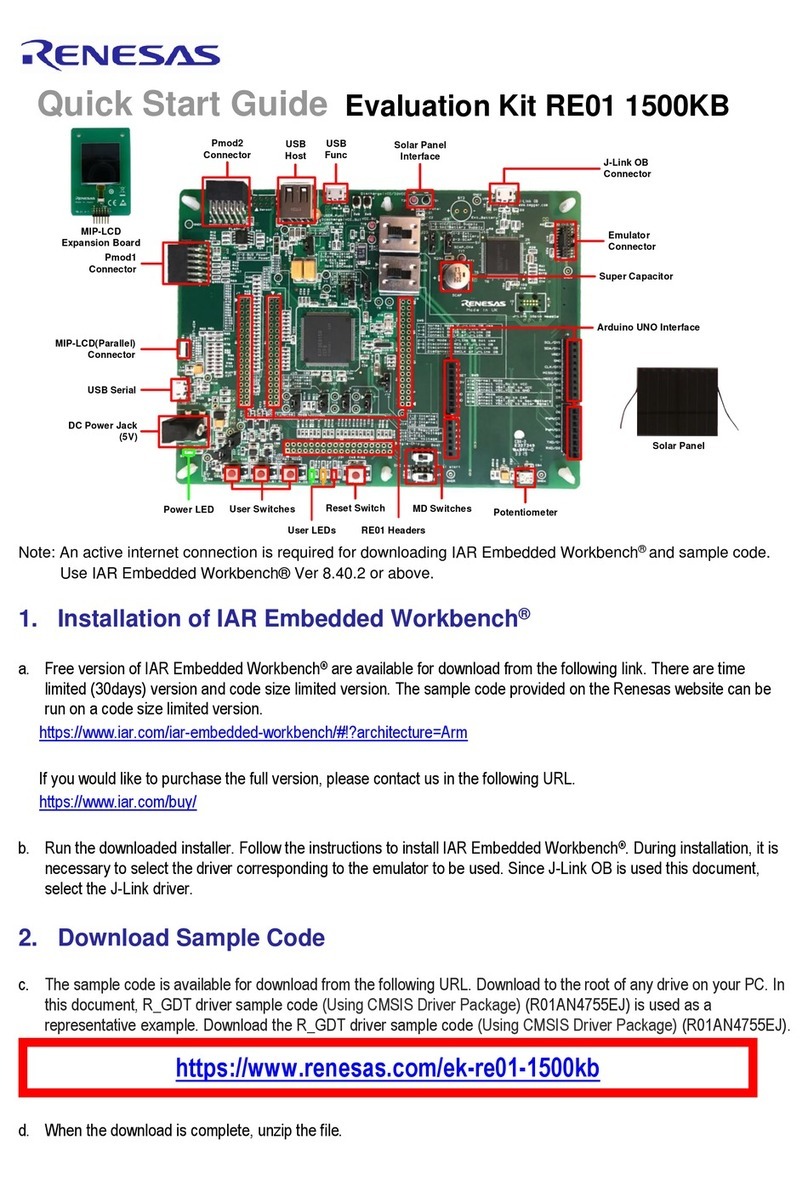
Renesas
Renesas RE01 15000KB quick start guide
Freescale Semiconductor
Freescale Semiconductor TWR-MPC5125 quick start guide

Asus
Asus MAXIMUS VI EXTREME user manual
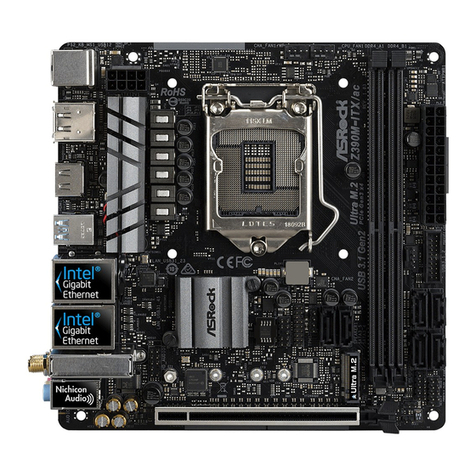
ASROCK
ASROCK Z390M-ITX/ac user manual
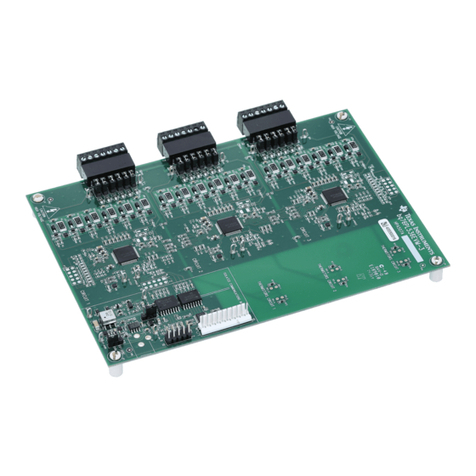
Texas Instruments
Texas Instruments bq76PL536A quick start guide
NXP Semiconductors
NXP Semiconductors MPC8349E-mITX-GP user guide


